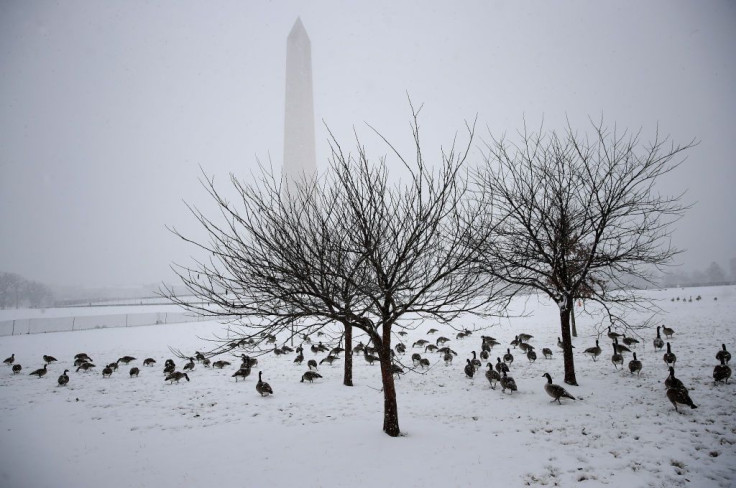Bomb Cyclone 2019: What Is The Phenomenon Raging In The US Today?

Some parts of the U.S. is currently experiencing extreme weather conditions in what some meteorologists describe as a “bomb cyclone.”
This rather rare weather phenomenon is marked by a major winter storm caused by extreme low pressures spanning in the last 24 hours. According to the National Weather Service, areas like Dallas and Colorado are currently the most affected, but wider estimates predict that millions of Americans across the central region could be directly hit in the next few days. Per NBC News, as many as 74 million people across America should be expecting severe conditions such as blizzards, heavy rains and flooding.
This weather phenomenon is being labeled a “bomb cyclone” by meteorologists and this happens when the atmosphere is experiencing bombogenesis. A bomb cyclone happens when atmospheric pressure drops dangerously low or falling at 24 millibars in 24 hours or less.
"Bombogenesis" was coined as a combination of cyclogenesis, or the formation of a cyclone or storm, and bomb as its effects can lash out in affected areas like an explosion. Aside from the atmosphere pressure, a bomb cyclone or winter hurricane has the strength of a Category 2 hurricane.
"This can happen when a cold air mass collides with a warm air mass, such as air over warm ocean waters. The formation of this rapidly strengthening weather system is a process called bombogenesis, which creates what is known as a bomb cyclone," the National Oceanic and Atmospheric Administration said.
According to a report, some meteorologists in the 1940s have informally called some coastal storms "bombs" because they develop "with a ferocity we rarely, if ever, see over land." The description was given by Fred Sanders, a retired MIT professor, who coined the term “bomb cyclone” in an article published in the journal Monthly Weather Review during the 1980s.
CNN Meteorologist Brandon Miller reported that the current storm pressure has "dropped 24 millibars in the last 18 hours” so the phenomenon definitely ticks all the criteria of a bomb cyclone.
Currently, the storm is raging Dallas with a 78-mph wind gust and has set 975 millibars of atmospheric pressure in Pueblo, Colorado. The low pressure is said to be the lowest the State has ever experienced.
Weather.com also reported blizzard warnings being issued in parts of eastern Wyoming, southeastern Montana, western Nebraska, western and central South Dakota, central and eastern North Dakota and northwest Minnesota.
© Copyright IBTimes 2024. All rights reserved.




















